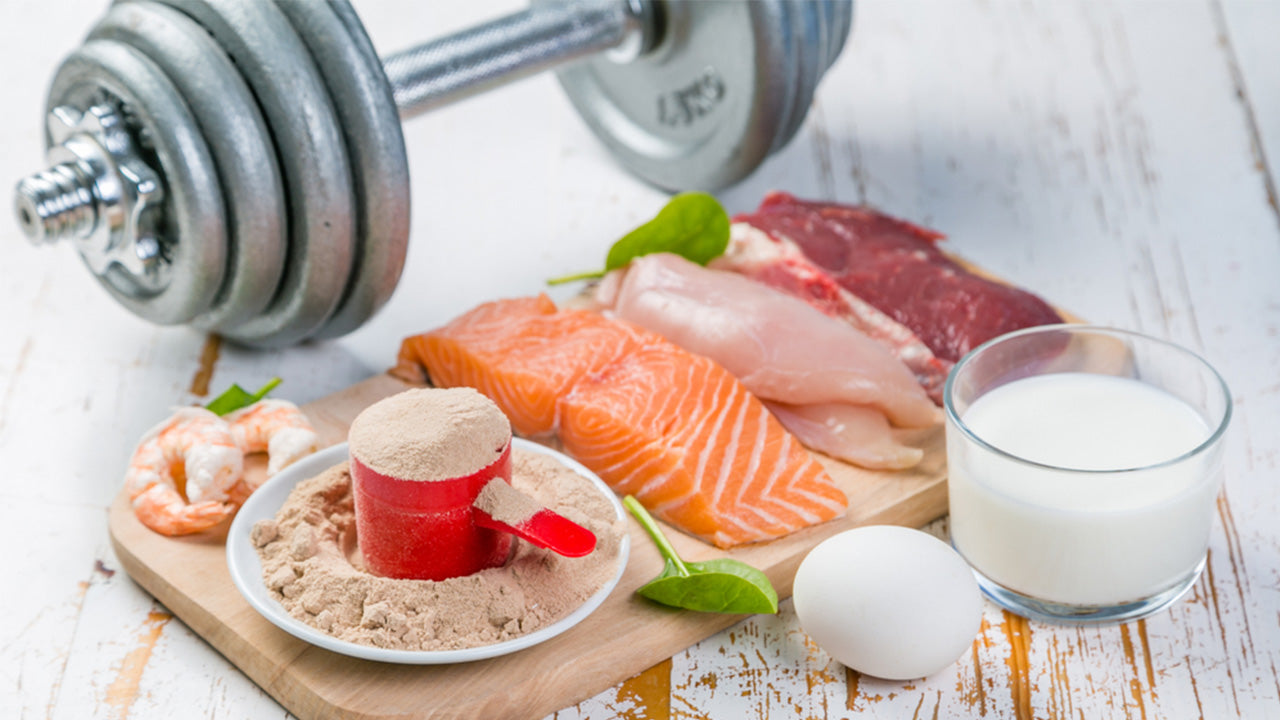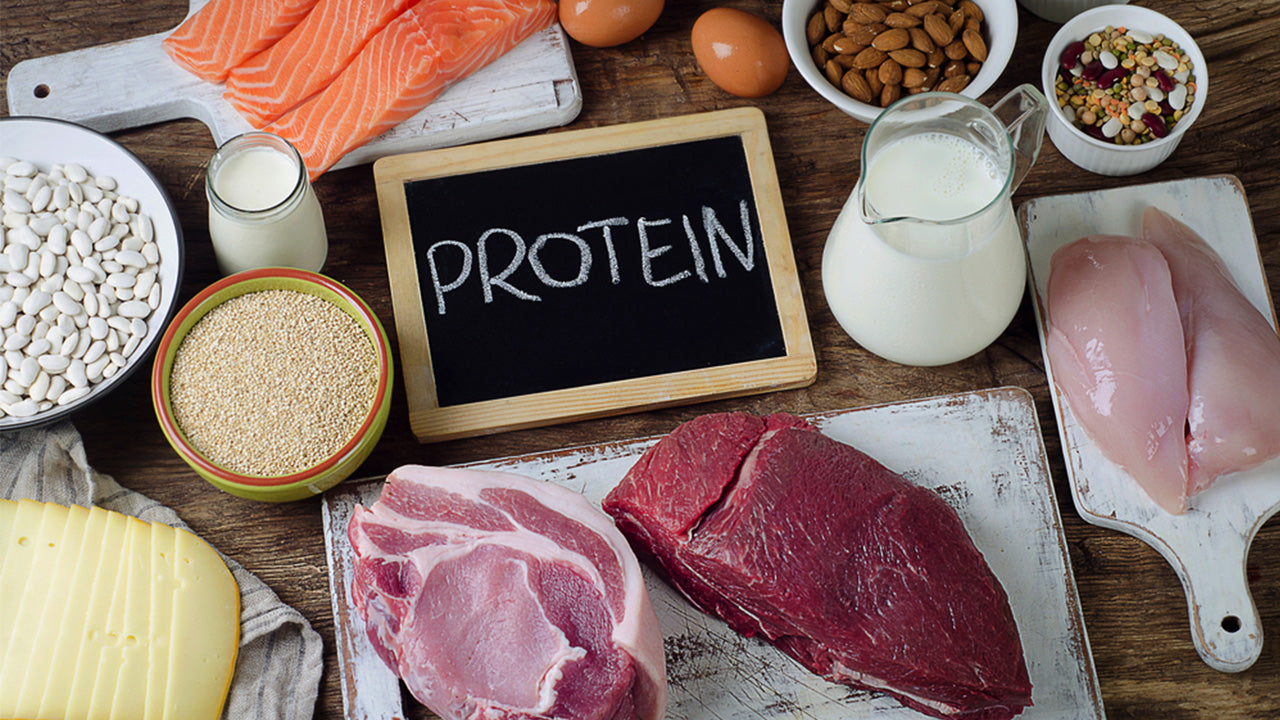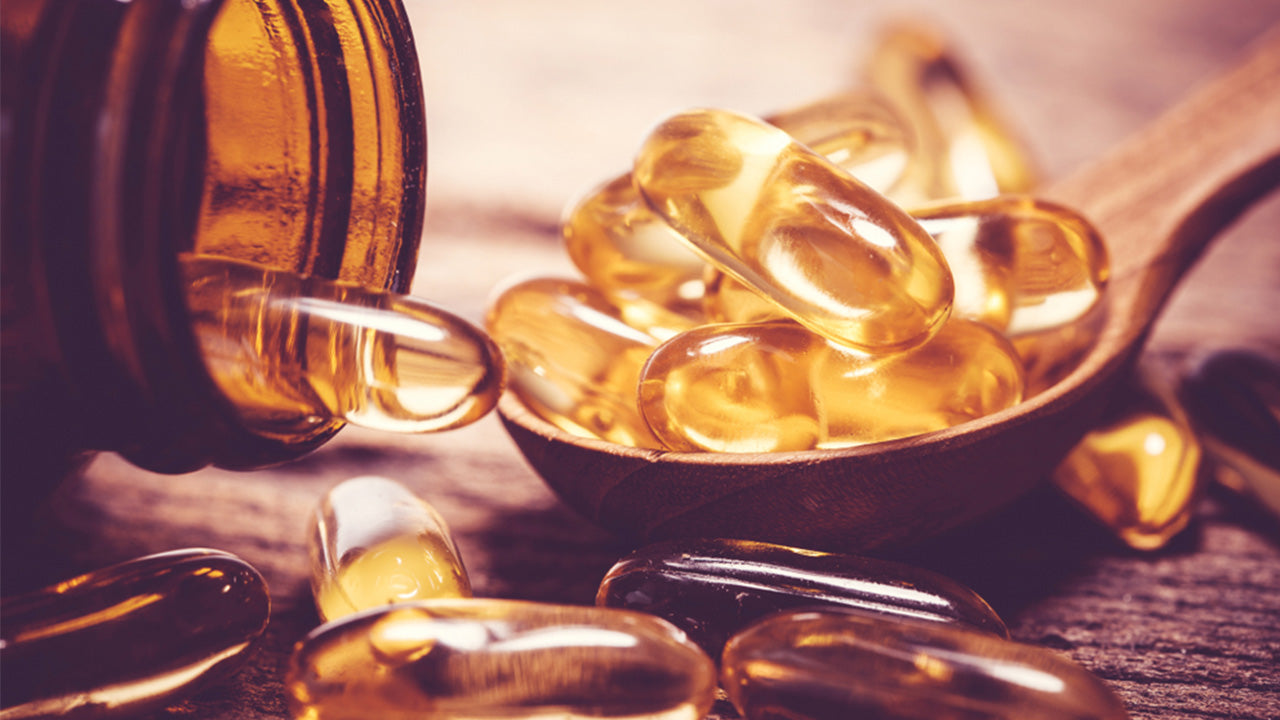The Best Animal Sources of Essential Amino Acids
 By: by Amino Science
By: by Amino Science

Without protein, we'd be a gelatinous mess. Protein gives structure and strength to the muscles, tendons, tissues, and organs in our bodies. This powerful macronutrient helps produce enzymes, chemicals, and hormones the body requires for virtually all biological processes. We need protein, and the building blocks that make them, to survive and thrive.
Animal products are considered the best sources of protein because they contain all nine of the building blocks of protein...the famous essential amino acids:
- Histidine
- Isoleucine
- Leucine
- Lysine
- Methionine
- Phenylalanine
- Threonine
- Tryptophan
- Valine
Amino acids make up proteins by linking together in a specific sequence and forming their signature protein. Protein sources that contain the nine amino acids in adequate proportions are called complete proteins, and they are the highest quality protein sources from dietary protein.
Not all animal products contain the same makeup of amino acids, and different cuts of the same meat contain different amounts of protein. Each tissue has a unique amino acid composition, determined by the specific function of the organ.
Way back in 1943, researchers analyzed the amino acid makeup of protein in 10 muscle meats:
- Beef
- Veal
- Lamb
- Pork
- Chicken
- Turtle
- Codfish
- Salmon
- Frog legs
- Shrimp
And six beef organ tissues:
- Liver
- Kidney
- Brain
- Heart
- Stomach
- Lung
The results show that these various classes of animals do not differ widely in their amino acid composition—the only significant difference was found in the presence of lysine, an essential amino acid critical to immune system health. The organs had similar amino acid compositions to the muscle tissues, but with lower lysine contents.
The takeaway? It's important to eat a varied diet of both animal- and plant-based protein to ensure adequate consumption of dietary amino acids. We'll cover the differences between the two below, but first, let's get clear on the best animal sources of amino acids, so you can be sure you're providing your body with the protein it needs to live a strong and healthy life.
5 Best Animal Sources of Amino Acids
No matter what type of meat you eat—beef, chicken, or fish—it's important to upgrade the quality in order to sustain the health gains. Processed meat like cold cuts, hot dogs, and sausage links that have been smoked, salted, cured, dried, or canned contain harmful chemicals and have been linked to chronic diseases such as hypertension, heart disease, bowel and stomach cancers, and COPD.
When choosing from the animal sources of protein below, opt for pasture-raised and grass-fed meats and animal byproducts to make sure you're getting all of protein's health benefits. When it comes to fishing, it depends on the fish: some fish are healthier sourced as wild-caught, while farm-raised fish can occasionally be a better choice.
1. Beef
Beef is a top-notch protein source, but the nutritional quality and quantity of saturated fats and amino acids depends on the cut and how the animals are raised. Steer clear of industrially raised livestock in favor of grass-fed animal sources.
The different parts of the cow also have different flavors; some are more tender and flavorful, while others are quite tough.
Round and back leg are the leanest cuts of beef, and they are perfect grilled. Lean cuts of beef provide about 31 grams of protein in each 3-ounce serving. A good rule of thumb is that the fattier the cut, the lower the protein content per gram. Hindquarters pretty much match the protein and saturated fat content of lean cuts of beef, and can be delicious when marinated overnight for enhanced flavor. The lower loin is a good source of protein and lower in fat, but tough, so it depends on your palate.
The quality of a protein food source depends not only on the protein and essential amino acid content, but also on its digestibility. Different cuts of beef not only have differing amounts of protein, but they also differ in terms of digestibility. Digestibility determines how much of the protein in beef actually gets into the body. For example, the digestibility of ground beef is greater than that of flank steak.
2. Pork
Pork is another good source of protein, but certain cuts contain a significant amount of fat. Ham comes from the leanest cuts of pork in the hindquarters and the lower half of the pig. There are 19 grams of protein and 2.2 grams of saturated fat in 85 grams of ham, while 85 grams of pork tenderloins contains 24 grams of protein and 1.3 grams of saturated fat.
3. Eggs
Just one egg has about 6 grams of protein. Egg whites might not be the best part of the egg in terms of flavor, but they are the leanest protein source. A single egg white contains 3.6 grams of protein and no fat. Egg whites house nearly half of all the protein in an egg, plus magnesium, potassium, and riboflavin, while the yolks contain many essential vitamins.
4. White Meats
White meats such as chicken and turkey are particularly rich in essential amino acids and contain less fat and cholesterol than red meat does. A 3-ounce serving of chicken or turkey breast has about 28 grams of protein. Chicken breast is the leanest source of chicken, but turkey is a better alternative if you’re concerned about consuming too much saturated fat—for every 85 grams of roasted turkey breast you're getting 26 grams of protein and a saturated fat content less than 0.5 grams.
5. Shellfish and Fish
Shrimp and scallops contain all the essential amino acids. Eighty-five grams of shrimp provides 20 grams of protein and zero saturated fat, and 85 grams of steamed scallops contains 17 grams of protein and only 0.2 grams of saturated fat.
Fish is also an excellent amino acid-rich animal food. A 3-ounce serving of halibut, tuna, or salmon provides about 22 protein grams. Coldwater fish like rainbow trout contains amino acids and is also rich in omega-3 fatty acids, making it a win for your health. Eighty-five grams of this fish baked offers up 20 grams of protein with a saturated fat content of 1.3 grams.

What About Plant Protein?
While animal protein certainly wins the gold star in amino acid makeup, we shouldn't limit our protein consumption to animal sources. Red meat supplies a hearty helping of amino acids, but should be eaten sparingly due to its equally high supply of fat and cholesterol, which has been linked to diseases such as cardiovascular disease and cancer. The same can be said about dairy products, which are also high-protein sources. Aim to eat no more than 1 to 2 servings of dairy per day.
Filling your plate with low-fat, high-quality protein from plant sources such as legumes, seeds, nuts, and whole grains, lowers your risk of heart disease and type 2 diabetes and ensures you get all the essential amino acids your body needs.
How Much Protein Do I Need to Eat?
The amount of protein that we need depends on our weight. Per kilogram of body weight for an adult, the recommended protein intake is 0.8 grams daily, or a little over 7 grams for every 20 pounds.
- A 110-pound person needs a minimum of about 40 grams of protein each day.
- A 210-pound person needs a minimum of about 74 grams of protein each day.
It's important to consider that these are the minimum targets for protein, and don't reflect your individual weight, health, or fitness goals. If you are looking to build muscle mass for instance, your daily protein needs are substantially greater, and can easily be boosted with a protein powder supplement. Likewise, if you're recovering from illness, injury, or surgery eating enough protein can be tricky and made easier with an amino acid powder blend.
If you're looking to increase your protein intake without taking in unnecessary calories from the carbohydrates and fats found in dietary protein such as animal and plant foods, check out our amino acid blends scientifically formulated for health benefits like weight loss, weight gain, heart health, liver health, muscle growth and more!

Up to 25% off Amino
Shop NowTAGS: food
Join the Community
Comments (0)
Most Craveable Recipes




 833-264-6620
833-264-6620



















